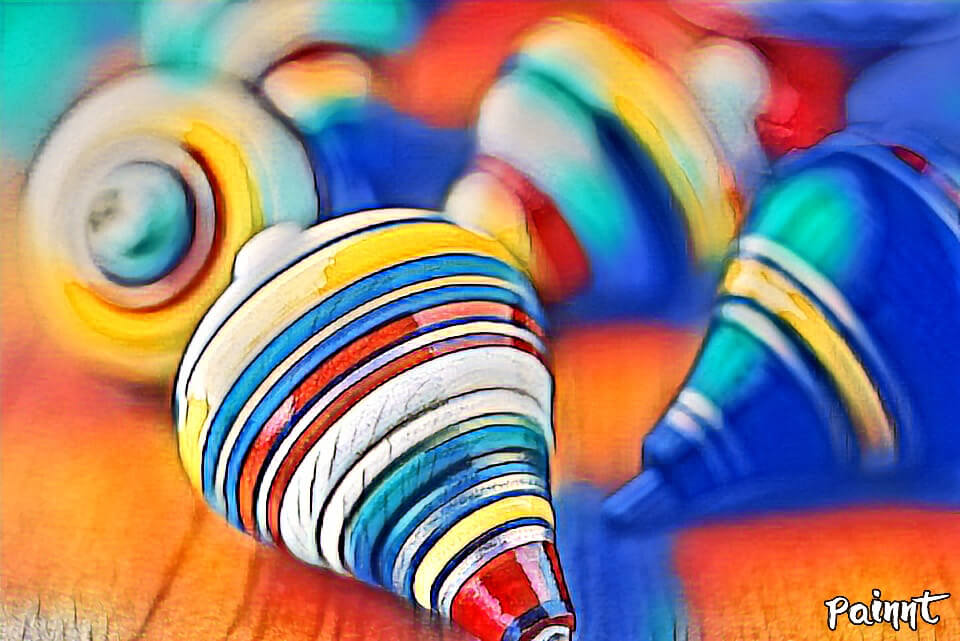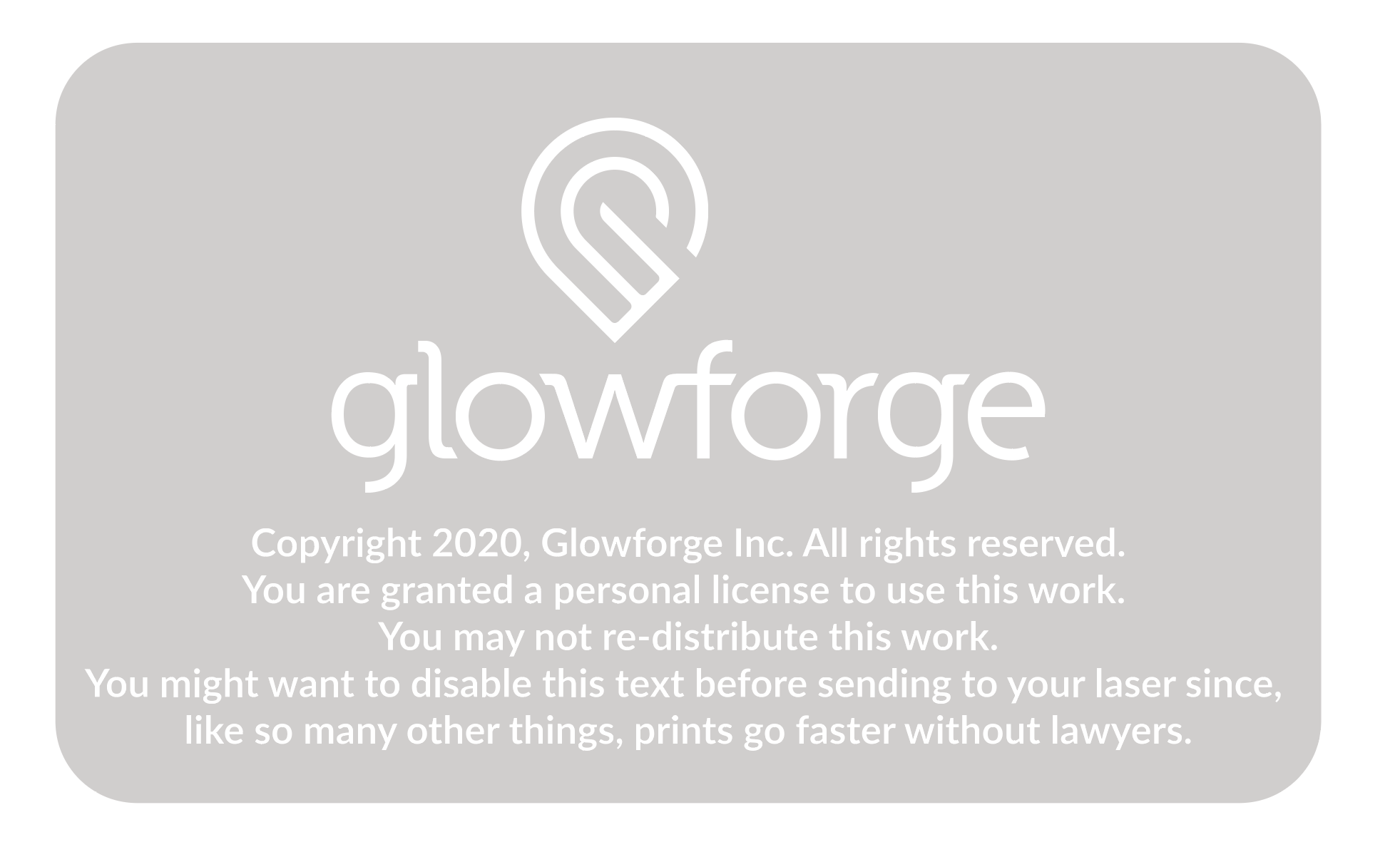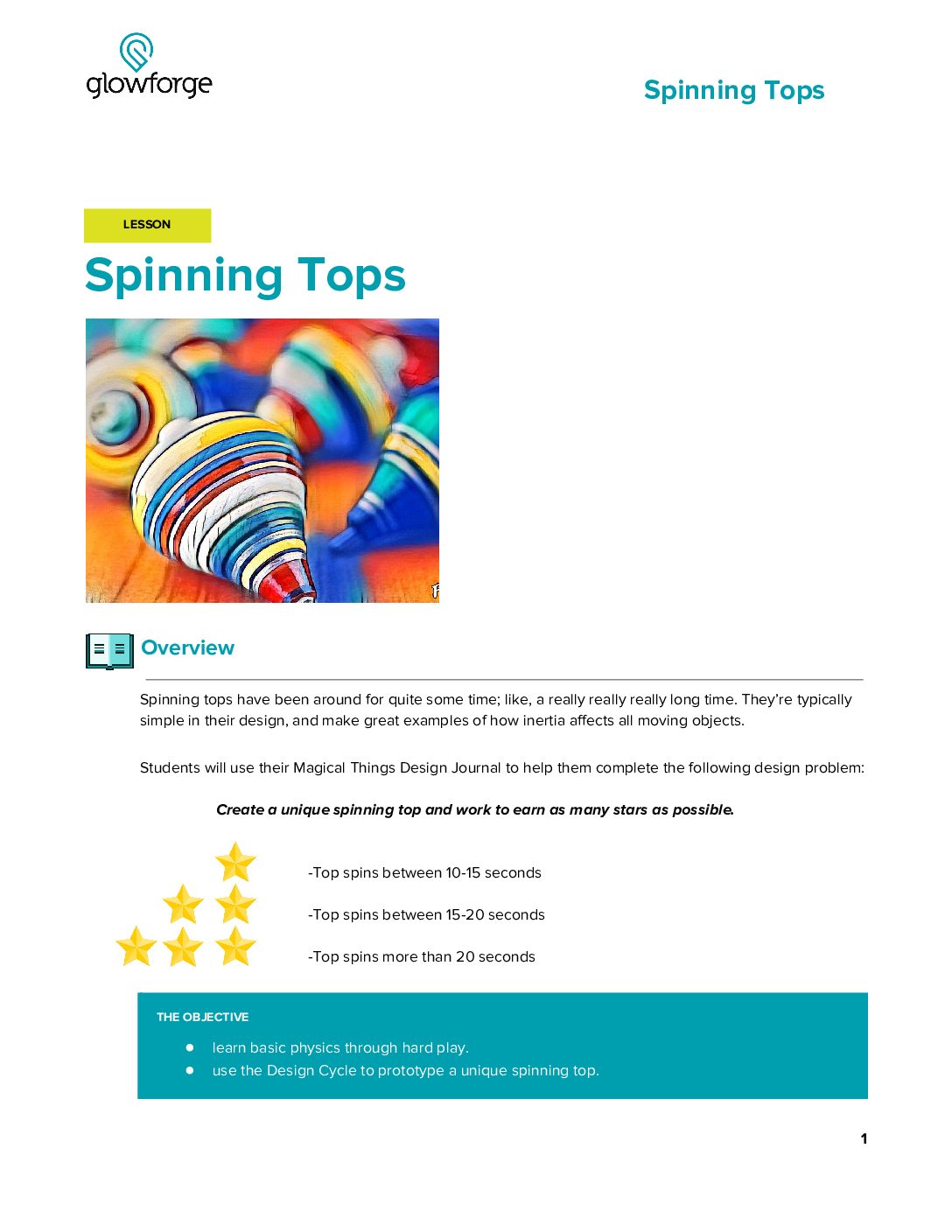
Grade Level
3, 4, 5, 6, 7, and 8
Difficulty
Intermediate
Duration
45 minutes
Subjects
Art
Craft
Design & technology
Engineering
Mathematics
Physical Science
Physics
Science
-
Measure the length of an object twice, using length units of different lengths for the two measurements; describe how the two measurements relate to the size of the unit chosen.
-
Estimate lengths using units of inches, feet, centimeters, and meters.
Vocab
Author
Glowforge
Licensing

Lesson for Download
Overview
Spinning tops have been around for quite some time; like, a really really really long time. They’re typically simple in their design, and make great examples of how inertia affects all moving objects. Students will use their Magical Things Design Journal to help them complete the following design problem: Create a unique spinning top and work to earn as many stars as possible.
★ Top spins between 10-15 seconds
★ ★ Top spins between 15-20 seconds
★ ★ ★ spins more than 20 seconds
Objective
Students will:
Supplies
- Wooden skewers
- Approved sheet materials for cutting and engraving
Description
Lesson Outline:
As a result of this lesson students will have:
- Designed and built a spinning top
- Tested and refined their designs
- Communicated their design process and results
History of the Top
Tops have been in existence for thousands of years. The first top was most likely a rock or acorn spun by a child. Tops have been used for entertainment, gambling, or even spiritual purposes. Tops have been discovered throughout history all over the world. Clay tops have been found dating back to 3500 BC in the Middle East. Wooden tops found in Egypt are believed to date back to 2000 – 1400 BC. Tops have been found in Greece from as early as 500 BC. In Rome, tops made of bone dating from 27 BC have been discovered.
Lesson Instructions
Engage
-
- Provide students with a new Magical Things Design Journal.
- Pose the problem and the three levels they will work towards.
- As class, discuss spinning tops. For many students, this may be a foreign toy to them.
Explore
-
- Have students review The History of Spinning Tops.
- Have students spend some time learning about inertia with Khan Academy.
Ideate
-
- Give students time to brainstorm all the ideas after their exploration. Encourage them to put down any and all ideas into their Magical Things Design Journal.
- Make sure students know and can see what materials they will have access to during this step in the Design Cycle.
- And the end of this step, have students choose one idea to move forward with.
Create
-
- Have students collect their materials and begin creating their designs.
- Students need to continue following the prompts in their Magical Things Design Journal. This will help them focus their attention and efforts.
- Each unique spinning top must use wooden skewers as it’s spinning point.
- Designs must be able to hold the skewer without any additional hardware; however, glue is permitted.
- Encourage students to review their digital designs before laser cutting. They should do their best to make sure that the design will meet their goals.
Test
-
- Students should have their first prototype ready at this point.
- As a class, discuss some different tests that teams could run their spinning tops through.
- Encourage teams to ask other teams (a “third party”) to perform the tests while they observe.
- Students need to pay close attention to their spinning tops during the tests and record any data, observations, or feedback they receive in their design journal.
Iterate
-
- This step in the Design Cycle may be one of the longest. Consider providing students with a full class period to iterate on their designs.
- If students are going to iterate on their designs beyond their first and second prototypes, it may be useful to print out additional pages of the Iterate section in the Magical Ideas Design Journal.
- As a class, read through some of the questions in the design journal together. Discuss as a group some of their findings and ideas for improvements.
- Have students return to their teams and begin to plan necessary improvements. Don’t let them get discouraged if they have to start all over with their design. This is common in the design cycle.
- As they rework their design to improve upon their original idea, remind them to double check their digital designs and their goals before doing any laser cutting and assembly.
- After they have their second prototype, students need to run the same (or even additional) tests of their spinning top. Have them repeat the process from step 5. Their Magical Ideas Design Journal will walk them through this.
Iterate Again
-
- For many students, the first and second prototypes will not meet their expectations and will fall short of their goals. Provide students with additional time to repeat the iteration process. If time and materials permit, allow them to do this multiple times.
- Additional copies of the Iterate step in the Magical Ideas Design Journal may be necessary.
Share
-
- Time to shine! Students need to wrap up their ideas and complete the remainder of their Magical Ideas Design Journal in preparation for their brief presentation to the class.
- Allow students to present in a way that best fits their team dynamic. Some students may struggle being in front of the class, while others may enjoy it. Discuss different roles team members can take on to ensure equitable participation.
- Their presentation should highlight their design and should be told as a story; how did you get from your first idea to your final design?
- As a bonus, have a spinning top tournament to see which design spins the longest.
Meet Glowforge
The magical 3D laser printer that made this lesson possible. Learn more!


